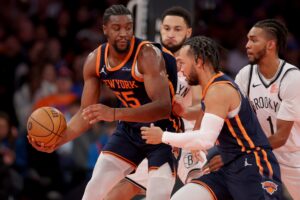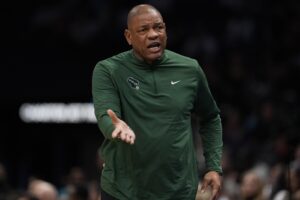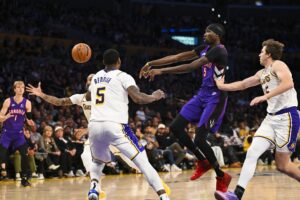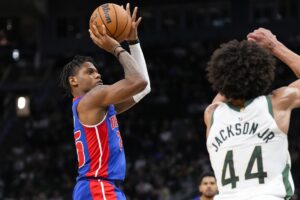Darius Garland, Zach LaVine, and Brandon Ingram represent missed opportunities for teams that hesitated to strike while their values were low. Each player faced significant trade rumors during the 2024 summer, with questions about their futures looming large. However, their performances early in the 2024-25 season have shifted perceptions, making them far more valuable assets. These situations highlight the risks of waiting too long to make a move, as improved form often drives up a player’s trade cost. Teams unwilling to gamble in the offseason may now find themselves priced out of the conversation.
What Garland, LaVine, And Ingram Have In Common
Darius Garland’s Redemption Story
During the 2024 summer, Garland’s future with the Cleveland Cavaliers seemed uncertain. Reports from Shams Charania indicated that Garland’s representatives considered pushing for a trade if Donovan Mitchell re-signed with the team. Mitchell eventually committed to a three-year, $150.5 million extension, raising questions about Garland’s future.
Garland is coming off a down season where he averaged 18.0 points and 6.5 assists on shooting splits of .446/.371/.834. Injuries limited him to just 57 games, and he appeared lost in J.B. Bickerstaff’s system. Trade rumors linked him to teams like the Miami Heat, Los Angeles Lakers, and San Antonio Spurs. However, these teams hesitated to offer the necessary assets to close a deal.
Fortunately for Cleveland, the Cavaliers replaced Bickerstaff with Kenny Atkinson, transforming the team’s dynamic. Now off to a 14-0 start, Garland has solidified his commitment to the Cavaliers. He’s averaging 21.1 points, 6.6 assists and 1.3 steals per game on shooting splits of .531/.458/.914. His strong play alongside Mitchell validates the front office’s belief in their pairing.
Trading Garland now would require an overwhelming offer of draft picks and players. The Cavaliers’ decision to stick with Garland has proven wise, unlike the missed opportunities some other teams faced with their stars.
Zach LaVine’s Rebound
The Chicago Bulls faced a similarly precarious situation with LaVine during the 2024 summer. Reports highlighted a rift between LaVine and head coach Billy Donovan, with the Bulls even shopping him alongside a draft pick to gauge interest.
Teams remained wary of LaVine’s injury history and his hefty contract, which owes him $137 million over three years. The second apron has made franchises cautious, fearing LaVine’s contract could become an albatross if he missed time.
LaVine averaged just 19.5 points on .452/.359/.854 shooting splits in 25 games last season. His value appeared at an all-time low, and no team was willing to make a substantial offer.
Fast forward to the 2024-25 season, and LaVine is off to a scorching start. He is averaging 21.9 points on career-best shooting splits of .513/.408/.737 and boasts a true shooting percentage of 62.7. His resurgence has shifted how the Bulls and other teams view him.
The Bulls, now 5-8, must decide what they want in return for LaVine. Interested teams like the Clippers will need to offer significant draft compensation or a top prospect. A trade involving LaVine now would demand far more than it did last summer.
Brandon Ingram’s Uncertain Future
Ingram also seemed destined for a trade during the 2024 offseason. Reports from the Pelicans camp hinted at a potential move, especially after he skipped the team’s minicamp.
Ingram’s standing with the Pelicans has been complicated by the rise of young players like Herb Jones and Trey Murphy III. Teams like the Lakers, Kings, and Cavaliers were reportedly interested, but no one took advantage of his diminished value.
Last season, Ingram averaged 20.8 points, his lowest in five years, fueling trade rumors. The Pelicans appeared ready to move on, but no team made a compelling offer.
This season, Ingram has started strong, averaging 23.6 points per game. His improved form has increased his value in trade talks, making him worth more assets than last summer. Any team hoping to acquire him now will face a steeper price.
Garland, LaVine and Ingram Represent the Conundrum of Offseason Trades
The situations of Garland, LaVine, and Ingram highlight the risks of trading players in the offseason. A player’s value can shift dramatically once the season begins, altering organizational perspectives.
Garland’s resurgence, LaVine’s hot start, and Ingram’s steady improvement have made their teams reconsider. These performances demonstrate why timing matters in player transactions. Teams unwilling to take risks in the summer often face higher costs later.
All three cases underscore the importance of patience and belief in a player’s potential. While it’s still early in the 2024-25 season, the missed opportunities for acquiring these stars are already evident.






